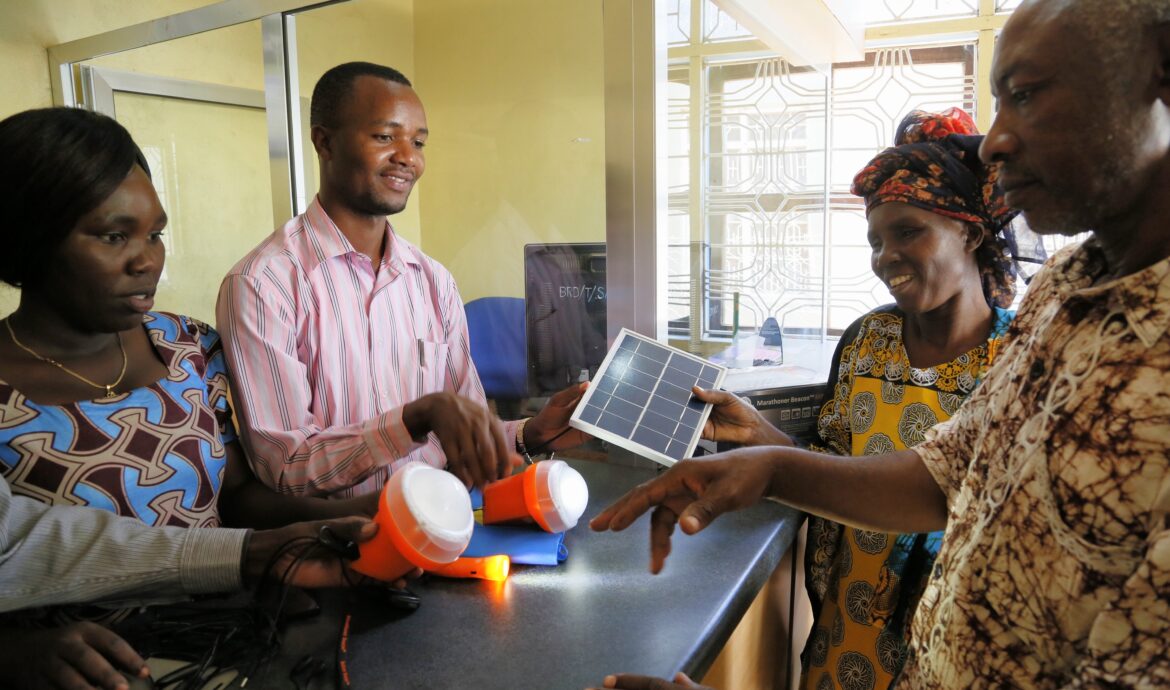
Electrifying Rwanda: Why mini-grid companies have lost the game
On 07.04.2020 by Churchill Omondi AgutuBy Churchill Agutu
Churchill Agutu is a PhD candidate carrying out research with the Energy Politics Group in collaboration with the Kigali Collaborative Research Centre (KCRC) under ETH Zurich’s ETH for Development (ETH4D) Scholarship. His research focuses on energy policy and finance and its influence on electrification in Sub-Saharan Africa.
Rwanda’s goal to reach 100% electrification by 2024 relies heavily on off-grid electricity systems, like solar home systems and mini-grids. Based on my recent field research, this will be a tall order for burgeoning solar home system and, especially, mini-grid companies, who face a number of challenges to scale.
Governments across the African continent aim to electrify 100% of their population by creating space for private companies to facilitate electricity access in a sector that has mostly been dominated by state-owned utilities. Rwanda, for instance, intends to reach 100% electrification by 2024, with 48% of those connections provided by the off-grid sector. The declining costs of solar PV panels and battery technology have made it possible for project developers to design and develop novel, affordable and scalable electrification approaches that can facilitate access to decentralised electricity and electricity-enabled services. Mini-grids (MG) and solar home system (SHS) companies are the two most likely suspects to provide those services.
I spent the latter part of 2019 in Rwanda. In speaking to key public sector actors, development institutions, and project developers who are providing energy services through solar home systems or mini-grids two pictures emerged. First, despite official plans, there is little room for mini-grid companies to play a significant role in the electrification efforts. Second, SHS companies also fight an uphill battle as they have to rethink their business models. This means that reaching 48% electrification by 2024 will be a challenge for the off-grid electricity sector if the focus is solely on facilitating the deployment of electricity rather than on facilitating access to the services that electricity enables.
Little room for mini-grid companies
Reason one: Financial and regulatory bottlenecks
My impression is that SHSs have scaled faster than MGs because they are not bound by the challenges of large-scale infrastructure deployment. For example, MG deployments require demand potential feasibility studies, site approvals from districts or the utility and confidence that the grid will not encroach on MG clients in the future. These bottlenecks affect MGs before they even reach the point of construction. SHSs, on the other hand, have been able to circumvent these hurdles and essentially offer energy services because they are sold as single units to individual customers e.g., households. This regulatory barrier to scale for MGs is further compounded by the difficulty of accessing low-cost finance, as the revenue models for these systems are less clear.
Reason two: No client relationships and no consumer data
Further, MG companies are still establishing themselves in the market. While SHS companies have already scaled, MG companies are grappling with developing a scalable business model. Moreover, remote monitoring systems enabled SHS companies to grow their client base widely across the country, and now also provide consumer data on electricity use and indications of consumer ability to pay. Understanding clients and their ability to pay is vital for MG companies as it would provide them with insight into current consumer demand, which can be used to better forecast it and can be invaluable for sizing new grids effectively (seeing as they are very capital intensive). MG companies are caught between the need for scale and the lack of data to facilitate it.
The uphill battle for SHS companies
Despite having an upper hand in Rwanda’s off-grid electricity sector, SHS companies face challenges with affordability. Some companies highlighted that the market for clients who can afford these systems is beginning to saturate and further, that some of the existing clients are defaulting on payments, which poses a risk to future revenues. These trends have therefore prompted SHS companies to think about how to adapt their businesses in the long term. One way to address this through business model innovation is to develop new revenue streams by exploring the potential to offer additional energy services to customer segments. In some cases, SHS firms are looking at offering energy services to customer segments in need of a technology, not just electricity access.
For example, the SHS company Ignite Power supplied solar water pumps for the Ministry of Agriculture’s Solar Irrigation in Rwanda (SIR) initiative, which aims to improve smallholder farm productivity by increasing access to solar irrigation. Ignite Power used this opportunity to facilitate access to solar irrigation equipment for smallholder farmers and cooperatives. Further, this gave them the opportunity to explore the potential for new business models, such as the Pay-as-you-Harvest model, where farmers make payments for the water pumps only during harvest seasons over a period of 2-3 years. This model allows them to pay when they earn revenues from selling crops, rather than throughout the year, as is typical for SHSs. This approach overcomes the challenges of customer liquidity and willingness to pay, since the consumer is able to pay for the pump when they have money available from the harvest.

Residents of Kamonyi District, Rwanda operating a solar water pump supplied by Ignite Power as part of the Solar for Irrigation (SIR) Project.
Smart policymaking drops the technology lens
Charting the path towards 100% electrification in Rwanda raises important questions about the public sector’s role as off-grid electricity companies become a bigger part of Rwanda’s electricity sector: How should these companies be regulated? Can policymakers incentivize companies to provide other services, like access to clean water and sanitation? More importantly, how will the off-grid market for SHSs interact with the central grid as both expand? Should the government invest in mini-grids? If so, what exactly should they incentivise? And which barriers should they address first?
The goal of electrification is to ensure access to affordable, reliable and modern energy services and so it is the services enabled by energy — water purification, irrigation, healthcare/hospital services (refrigeration and powering medical equipment e.g ventilators), etc. — that should be incentivised. The choice between electrification approaches, i.e., SHSs or MGs, should depend on which one can best provide a required service to a particular electricity consumer segment. Based on this, the policymaker can decide whether to incentivise the service itself, the asset providing the service or both.
Using this energy service perspective, SHS companies are in a position to serve the low consumption residential electricity service market, simply because they have a countrywide network and a business model tailored to provide basic energy services. SHSs have the service embedded in the product: clients pay for the product (panel and battery) as well as the services (enabled by appliances). So here it would make sense to incentivise the service by, for instance, subsidising the weekly or monthly fee paid by the client for the product.
For MGs however, the focus has been on incentivising deployment of the asset, which is a challenge because there remains uncertainty about what exact service it will enable once deployed, especially if anticipated electricity use is not known. Before subsidising MG assets without a clear definition of the intended service provision, I would urge policymakers to define what the role of MGs should be in electrifying the country. To do this, they can start by identifying existing and potential services (qualitatively as a start) that can be enabled by electricity, understanding how best to provide these services in a given region, and then incentivising provision of the service itself. Policymakers should drop their technology lens and focus instead on how to best provide the required energy services, since this approach will make it easier to determine which technology is best suited to enable the service.
It is of course important to highlight that the narrative playing out for MG and SHS companies is not specific to Rwanda alone. A significant portion of potential energy consumers in Sub-Saharan Africa reside in rural areas, earn low incomes, and lack access to electricity as well as the services electricity enables. Thus, challenges with extending the central grid, customer affordability, and regulatory uncertainty for off-grid companies are major challenges for project developers across the continent. Nevertheless, whether it’s Rwanda or any other country in SSA, shifting the focus from the electrification technology toward electricity-enabled services opens up opportunities for policymakers to make more informed decisions about how to design incentives to facilitate an electrification strategy that can best serve its people.
Cover Photo Courtesy: DFID “Creative Commons DFID” by tvol is licensed under CC by 2.0
Keep up with the Energy Blog @ ETH Zurich on Twitter @eth_energy_blog.
Suggested citation: Agutu, Churchill Omondi. “Electrifying Rwanda: Why mini-grid companies have lost the game.”, Energy Blog @ ETH Zurich, ETH Zurich, April 8, 2020, https://blogt.ethz.ch/energy/electrifying-rwanda/
If you are part of ETH Zurich, we invite you to contribute with your findings and your opinions to make this space a dynamic and relevant outlet for energy insights and debates. Find out how you can contribute and contact the editorial team here to pitch an article idea!


Dear Churchill, thanks for the article. I generally agree with you. I have been an investor in SHS and MG companies for 10 years and have seen the challenges you speak of first hand. MGs can work but only in very specific situations. SHS have scaled faster, but the businesses aren’t easy to run and grow. I remain baffled by policymakers (and their advisors) continued focus on MGs. The attention and support MGs receive is not justified especially if, – as you say – ” one drops the technology lens” and instead just focuses on how access can best be provided. Thanks again and keep up the good work.